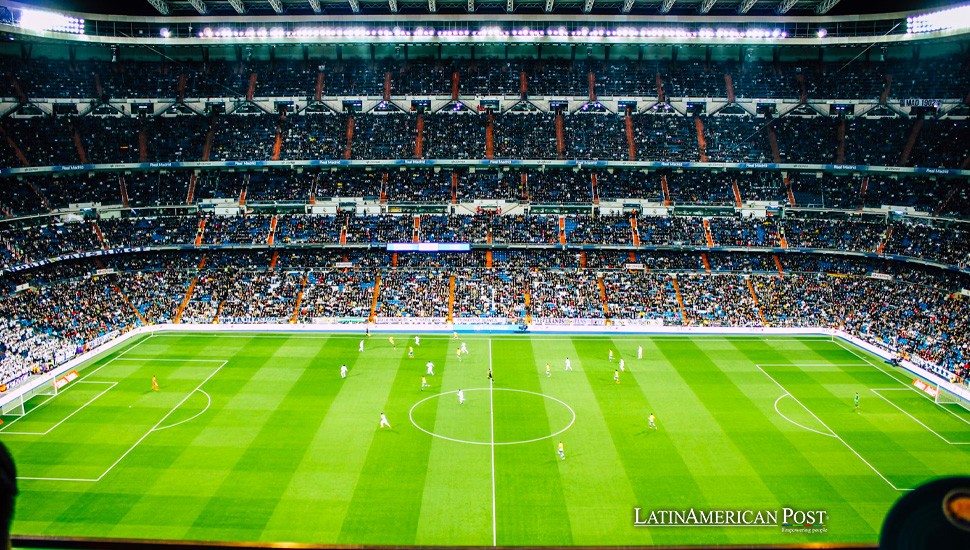Top 20 Latin American Soccer Rivalries: Historical Clashes and Cultural Ties

Latin American soccer is celebrated for its intense rivalries, where historical clashes and cultural ties converge, creating legendary matchups that have become integral to the continent’s soccer narrative and allure
LatinAmerican Post
Escucha este artículo
With its vibrant culture and passionate love for soccer, Latin America is home to some of the most intense soccer rivalries in the world. These matchups are more than just games; they are cultural phenomena that reflect the history, societal tensions, and local identities of the countries involved. Here, we explore twenty of the most storied rivalries across the continent, each carrying its unique significance and legacy.
- Boca Juniors vs. River Plate (Argentina): The Superclásico epitomizes Argentine soccer passion. This rivalry, dating back over a century, represents Argentine society’s social and class divides and has seen unforgettable encounters, including the dramatic 2018 Copa Libertadores final.
- Independiente vs. Racing (Argentina): This Avellaneda derby features two world champions. Their matches, including the controversial 1992 Supercopa Sudamericana, highlight the competitive spirit in Argentine soccer.
- Atlético Nacional vs. América de Cali (Colombia): A rivalry fueled by both clubs’ rise in the 80s and 90s, this duel between the greens and reds of Colombia has become one of the continent’s most recognized confrontations.
- Nacional vs. Peñarol (Uruguay): With eight Copa Libertadores titles between them, this Uruguayan classic is marked by historical encounters, including their direct elimination matches in the Copa Libertadores.
- Cerro Porteño vs. Olimpia (Paraguay): Paraguay’s great match is characterized by Olimpia’s dominance in Libertadores and national championships, making it a fierce and iconic rivalry.
- Flamengo vs. Corinthians (Brazil): Known as the classic of the people, this Brazilian derby reflects the regional rivalry between Rio de Janeiro and São Paulo, with memorable matches like the 1991 Brazilian Super Cup.
- Guadalajara vs. Club América (Mexico): Starting in the late 1950s, this rivalry has grown into a national and international contest, fueled by the quality of players and the clubs’ successes.
- Emelec vs. Barcelona (Ecuador): The Astillero classic, reaching its zenith in the 2014 final dubbed ‘the end of the century,’ is a crucial fixture in Ecuadorian soccer.
- Colo-Colo vs. University of Chile (Chile): This match unites Chile’s two most famous teams, with six title deciders, each claiming three trophies.
- The Strongest vs. Bolivar (Bolivia): Dating back to 1927, this Bolivian rivalry is a significant event, reflecting the deep soccer culture in Bolivia.
- Santos vs. São Paulo (Brazil): This rivalry showcases high-quality Brazilian soccer, a clash of two of São Paulo’s most successful teams.
- Universitario vs. Alianza Lima (Peru): Known as “El Clásico del Fútbol Peruano,” this match represents a significant clash in Peruvian soccer, steeped in history and passion.
- Cruz Azul vs. Club America (Mexico): A major Mexican rivalry featuring two of the country’s most successful teams, each with a storied history and a large following.
- Atlético Mineiro vs. Cruzeiro (Brazil): The Belo Horizonte derby is one of Brazil’s most heated rivalries, representing long-standing competition between two top teams of Minas Gerais.
- Rosario Central vs. Newell’s Old Boys (Argentina): The “Clásico Rosario” is a passionate rivalry representing Rosario’s two most popular teams.
- Palmeiras vs. Corinthians (Brazil): The “Derby Paulista” showcases the intense competition between two top São Paulo clubs.
- Chivas vs. Pumas (Mexico): A major Mexican soccer rivalry featuring contrasting styles and histories, leading to exciting and unpredictable clashes.
- Deportivo Cali vs. América de Cali (Colombia): Known as “El Clásico Vallecaucano,” this rivalry represents intense competition between two of Cali’s top teams.
- Olimpia vs. Cerro Porteño (Paraguay): The “Superclásico” of Paraguayan soccer features two of the country’s most successful teams in highly charged matches.
- Club Nacional vs. Peñarol (Uruguay): Uruguay’s most significant rivalry, also known as the “Uruguayan Clásico,” features two storied teams with a long history of intense matches.
As a bonus, we will mention Millonarios vs. Santa Fe (Colombia) “Clásico Capitalino” rivalry, one of Colombia’s most significant rivalries, represents the intense competition between Bogotá’s two most prominent clubs.
These rivalries, each with its unique backstory and significance, illustrate the deep-rooted passion for soccer in Latin America. They are about winning a game and honoring history, culture, and tradition. The stadiums hosting these matches transform into arenas where soccer skills are displayed, as regional pride and cultural identity.
These derbies often reflect societal narratives and historical contexts in countries like Argentina, Brazil, and Mexico. They are microcosms of the larger society, where soccer becomes a medium to express, confront, and celebrate social, cultural, and political identities. For instance, the Boca Juniors vs. River Plate rivalry reflects Buenos Aires’ societal divide. At the same time, the Flamengo vs. Corinthians match showcases the rivalry between two of Brazil’s largest cities.
Furthermore, these Latin American soccer rivalries have contributed to the development of the sport globally. They have been breeding grounds for the world’s most extraordinary soccer talents, who first made their mark in these high-stakes matches. The intensity and pressure of these derbies have shaped players, preparing them for international fame and success.
Latin America’s top soccer rivalries are more than just sporting events; they are cultural celebrations that showcase the continent’s passion for soccer. They are events where history, love, and pride collide, creating a unique and unforgettable experience. These rivalries are a testament to the deep connection between soccer and cultural identity in Latin America, making them an integral part of the continent’s rich sporting narrative.




